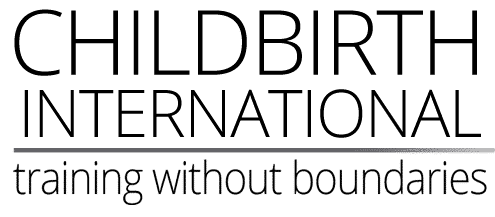Becoming a Birth Doula – Free Guide!
Our free guide on the steps you can take if you want to be a birth doula.
Our free guide on the steps you can take if you want to be a birth doula.
Thinking about switching careers and becoming a birth doula? In the 2nd post of this series, we ask 7 highly experienced doulas about the realities of the job.
Thinking about switching careers and becoming a birth doula? Unsure whether to take the leap? This four-part series asks seven awesome doulas to tell us how they switched careers to become a birth doula. They talk about the ins and outs of the job, and how they feel about working as a birth doula. The …
As a CBI student, you’ll have a ready-made curriculum so you can start teaching whenever you feel ready. But you will also have dozens of ideas for different activities, so you can adapt your classes to meet your own teaching style and your client’s needs. You’ll be provided with activity suggestions on knowledge-based topics (e.g., lactation, stages of labor, pain management, interventions), communication topics (e.g., communicating with caregivers, writing birth plans, decision-making), and hands-on parenting skills. At the end of this unit, you will be able to:
In order to determine whether or not our classes are meeting the needs of our clients, the most effective way is to ask the clients. In this unit, we will explore different methods for evaluating the effectiveness of our classes and explore ways that we could enhance the classes if they are not. We’ll discuss different evaluation form designs and determine the most appropriate time and method for getting evaluations from clients. We’ll also look at how you use evaluations from clients to improve your classes and identify new areas for your own professional development. Finally, we’ll consider how to manage the situation when a client is disappointed with the classes. At the end of this unit, you will be able to:
Visual aids can be used in childbirth classes to help clients grasp a concept visually that otherwise would be very difficult to understand. However, they can also be fraught with difficulties. Videos can frighten clients if they are inappropriate or too graphic, and charts or pictures may not be clear enough to understand. Using a pelvis or doll inappropriately can affect the messages you are sending to your clients. During this unit, we will explore the benefits and disadvantages of visual aids and consider ways that you can use them for maximum impact and effectiveness. We will also consider how you can use real people, for example, parents of a young baby or other health professionals, to add an extra dimension to your classes and help create a more realistic picture for clients. Finally, we will explore ways that you can use visual aids cheaply without necessarily having to purchase a large number of expensive items. At the end of this unit, you will be able to:
In this unit, you’ll be exploring the differences between traditional teaching methods and active teaching methods, together with the importance of teaching clients skills rather than just knowledge. We’ll also be looking at ways to keep your teaching focused on the group’s needs and how to meet your client’s expectations. At the end of this unit, you will be able to:
Successful childbirth classes start with great planning! You’ll explore the different ways to plan and structure a course, learn about the differences between aims and learning outcomes, how to keep your classes balanced, focused on your client’s needs, and, most importantly, fun. You’ll identify the topics you want to cover in your classes and learn how to choose the right activities for each topic. You’ll also be looking at alternative course formats so you can choose the structure that’s right for you and your clients. At the end of this unit, you will be able to:
In the first teaching skills unit, you’ll explore the history of childbirth education and the role of the childbirth educator. You’ll look at the benefits of childbirth education to your clients according to the evidence. You’ll also think about the different formats and types of childbirth education classes and the different options for the timing and length of your classes. At the end of this unit, you will be able to:
Much of our experience of teaching will come from being taught ourselves. During this unit, we’ll consider the learning needs of adults and common problems when working with adult groups. You’ll develop strategies for getting adults to work effectively together in groups and learn how to address the needs of both your clients and their partners or other support people in childbirth classes. At the end of this unit, you will be able to:
A birth doula typically provides 1-2 postpartum visits with a client but might be available for telephone or email consultation for the first few weeks after the birth. In this unit, you’ll be looking at how to debrief a birth with a client and also with peers if you need support after a birth, writing a birth story for your client, accessing resources to support a client, supporting other family members, and providing support if your client is experiencing a perinatal mood and anxiety disorder.



